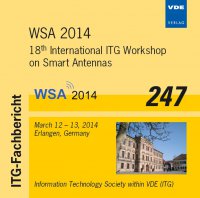On Matching Strategies for Wireless Receivers
Conference: WSA 2014 - 18th International ITG Workshop on Smart Antennas
03/12/2014 - 03/13/2014 at Erlangen, Germany
Proceedings: WSA 2014
Pages: 6Language: englishTyp: PDF
Personal VDE Members are entitled to a 10% discount on this title
Authors:
Lehmeyer, Bernhard; Ivrlac, Michel T.; Mezghani, Amine; Nossek, Josef A. (Institute for Circuit Theory and Signal Processing, Technische Universitaet Muenchen, Germany)
Lankl, Berthold (Institute for Information Technology, Munich University of the Federal Armed Forces, Germany)
Abstract:
Power matching and noise matching are well known established approaches, though they are not the only strategies for designing an optimal receiver. If the best SNR is the design goal, then obviously noise matching is the choice, while for obtaining the highest signal level, power matching has to be chosen. In fact the matching two port between the antenna and a commercial low noise amplifier (LNA) for both strategies turns out to be quite different. While for power matching all the power available from the antenna will be absorbed and amplified by the LNA, for noise matching a possibly considerable part of the available power will be reflected. The SNR at the output of the LNA will be superior in the latter case, but at the expense of a reduced signal level. But an ADC at the end of the analog part of the receiver needs a certain signal level to work properly. Therefore a compromise between the two general purpose strategies, which will be called "Sensitivity matching", may be the optimum approach.


